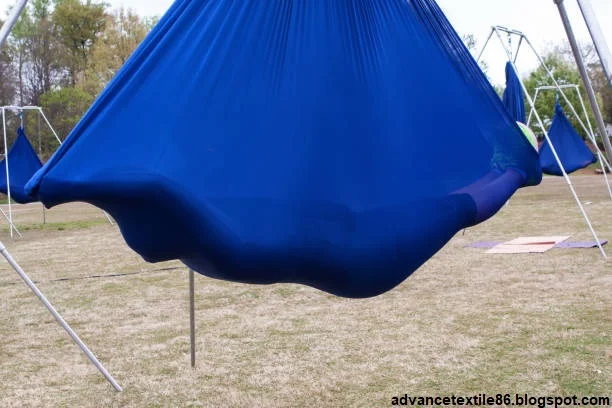Spandex
The
term spandex is an anagram of the word ‘expands’, which is a familiar name in
North America. In continental Europe, it is characterized by forms of
'elastane', including élasthanne (France), elastan (Germany, Sweden), elastano
(Spain), elastam (Italy), and elastaan (Netherlands); And in the United
Kingdom, Ireland, Portugal, Spain, Latin America, Australia, New Zealand, and
Israel, it is commonly known as ‘Lycra’.
Spandex
is a synthetic fiber known for its exceptional elasticity that is a
polyether-polyurea copolymer that was invented in 1958 by chemist Joseph
Shivers at DuPont's Benger Laboratory in Waynesboro, Virginia. Generically
spandex is composed of at least 85 percent polyurethane by weight. These fibers
are commonly used for their highly elastic properties. The trademarked fibers
of this group are Lycra, Numa, Spandelle, and Vyrene. Such fibers substitute
natural and synthetic rubber fibers for many textile purposes.
Properties of spandex
i.
Spandex can be stretched repeatedly and is still found very close back to its
original length and size
ii.
It can be stretched generally more than 500% without breaking
iii.
It is stronger, more durable, and has higher retractable strength than rubber
iv.
It is lightweight, soft, smooth, supple fiber
v.
It provides a combination of comfort and fit in garments, prevents bagging and
sagging
vi.
Heat-settable - Helps to convert baked fabrics into flat fabrics or flat
fabrics into permanent round shapes
vii.
These are dyeable
viii.
It is resistant to corrosion by body oils, sweat, lotions, or detergents
ix.
It is abrasion-resistant
x.
Spandex fabrics are sewn, with little or no damage from needle cutting compared
to older types of elastic materials.
xi.
Available in fiber diameters ranging from 10 deniers to 2500 deniers
xii.
It is available in clear and opaque lusters.
The manufacturing process of spandex
Spandex
fibers are produced in four ways such as melt extrusion, reaction spinning,
solution dry spinning, and solution wet spinning. The solution dry spinning
method is popularly used to produce more than 94.5% of the world's spandex
fibers. The process is-
A. 1st Step is to produce
the pre-polymer
In
this step, it mixes micro glycol with diisocyanate monomers. These are mixed in
a reaction vessel to produce a pre-polymer. A common ratio of glycol and
diisocyanate is 1: 2.
B. 2nd step is to produce
the spinning solution
Pre-polymer
reacts with equal amounts of di-amine. It is known as a chain extension
reaction. The applied solution is mixed with a solvent to produce the spinning
solution. The solvent helps to make the solution thinner and easier to handle
and then it can be thrown into the fiber production cell.
C. 3rd step - the solution
is pumped into a cylindrical spinning cell
The spinning solution is pumped into a tubular spinning cell where it is cured and
converted into fibers form. In this chamber, the polymer solution is forced
through a metal plate called a spinneret. This results in the solution being
marginalized in the strands of the liquid polymer. As the strands pass through
the cell they are heated in the presence of a nitrogen and solvent gas. This
process results in the liquid polymer chemically reacting and forming a stiff
strand.
D. 4th step is making
fiber
As
the fibers leave the cell, several strong strands bundle together to produce
the desired thickness. Each of the fibers in the spandex consists of many
individual fibers that adhere to each other due to the natural adhesion of
their surface.
E. 5th step is to stick
together and produce textiles
The
resulting fibers are treated with a finishing agent that may be magnesium
stearate or polymer. This treatment helps the fibers to stick together and
produce textiles. The fibers are then transferred through a series of rollers
in a spool.
Uses of spandex
i.
It is used to support, shape, or mold the body or to keep textiles from
stretching out of shape during use.
ii.
It is used primarily in knit foundation garments, action wear, intimate
apparel, shapewear, hosiery, furnishings, and narrow fabrics.
iii.
It is used in medical-surgical and supports hoses, bandages, and surgical wraps.
iv.
Blends of 2% to 40% spandex with other fibers is a common matter.
v.
Spandex yarns are also possible to weave or knit.










0 Comments